 Movie Talk
Movie Talk‘White House Down’ (But Not Out): 10 Real Presidents Who Kicked the Most Butt
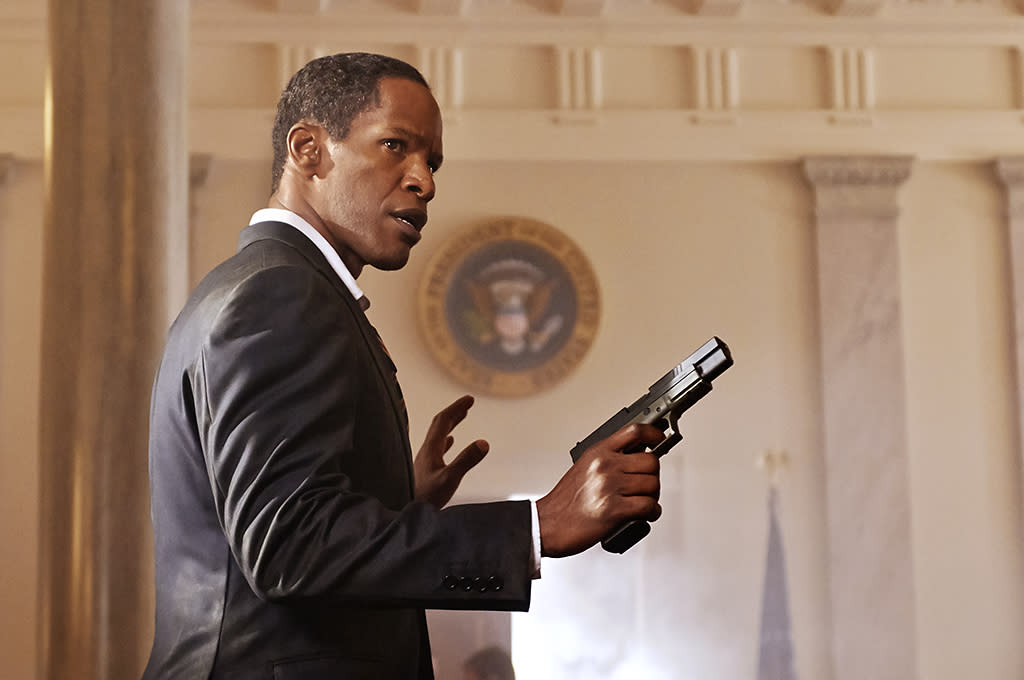
Jamie Foxx plays U.S. President James Sawyer, a man forced to defend 1600 Pennsylvania Avenue from an all-out attack by domestic terrorists.
Yes, starting this Friday we get to see the President pull out his piece — and his rocket launcher — in "White House Down." While it's a shocking prospect (can you imagine Obama doing that!?), real presidents in U.S. history have scrapped and battled their way to victory — some in arguably more dire circumstances.
Watch 'White House Down' Clip — Off My Jordans:
In ranked order, these are 10 United States Presidents who proved they could kick some major butt when the going got tough:
PAGINATE
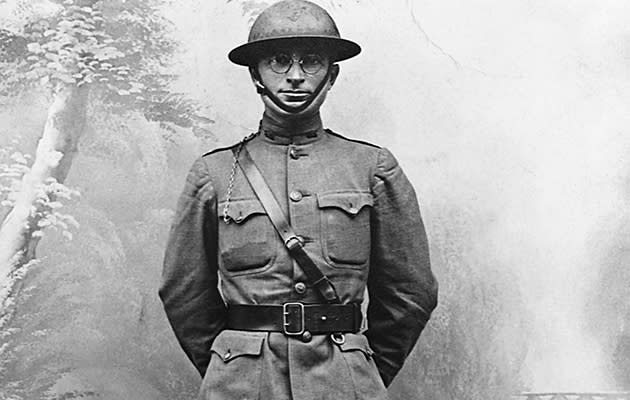
10. James A. Garfield: Know When to Hold 'Em, Know When to Fold 'Em.
One of the hardest but most important parts of being a military man is stepping down when those are your orders. During the early days of the Civil War, James A. Garfield, later the 20th president, was a Lieutenant Colonel in the 42nd Ohio Volunteer Infantry. At a time when Union forces were still finding their feet, Garfield led his men to impressive victories in Kentucky. Garfield soon was promoted to Brigadier General and later Major General, but in 1862 he resigned from the military and ran for a congressional seat. Why? President Lincoln persuaded him that he needed an ally in the House of Representatives more than he needed him on the battlefield. After eighteen years as a representative, Garfield became a dark horse candidate for president and won a narrow victory, but his time in office was limited – he was killed by an assassin after serving for only two hundred days.
9. Harry Truman: Citizen Soldier Turned Commander-in-Chief
Harry Truman, the 33rd U.S. president, tried to serve in both World Wars. He joined the Missouri National Guard in 1905, serving until 1911. When World War I beckoned in 1917, Truman was one of the founders of the 2nd Regiment of Missouri Field Artillery, and was soon called up for duty as part of the Army's 129th Field Artillery. Truman and his Missourians served in France, and the future president rose to the rank of Captain, commanding a regiment with the 129th. After the war, Truman rejoined the reserves, and volunteered to serve during World War II — but was turned down. If Truman had been accepted, it's anyone's guess if he'd have become Franklin D. Roosevelt's Vice President in 1945. Truman took over the office of President following FDR's death 82 days later, leading the nation through the difficult last days of the war.
8. James Monroe: Washington's Right-Hand Man
Most folks know the famous painting of George Washington crossing the Delaware en route to the Battle of Trenton, but he wasn't the only future president on board. James Monroe, who became the fifth president in 1817, was with Washington for the decisive battle in late 1776; he was wounded in combat and decorated for bravery. After recovering, Monroe went on to become an aide-de-camp to Lord Stirling, a Scottish expatriate who commanded colonial forces, and Monroe was a scout for Washington prior to the Battle of Monmouth. In 1780, after attempting to organize a volunteer force in Virginia, Thomas Jefferson appointed him the state's military commissioner, which took him away from active military service but put him on his path that led to the White House.
PAGINATE
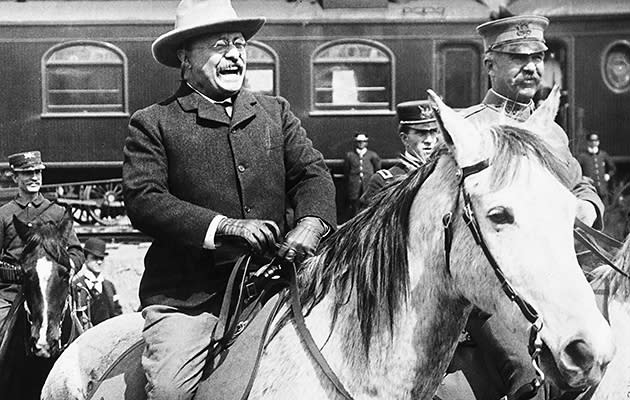
7. Theodore Roosevelt: Cowboy in the Oval Office
Lots of politicians like to act like cowboys, but 26th U.S. President Theodore Roosevelt didn't have to pretend. In 1883, during a visit to Dakota, the New York-born Roosevelt bought some land and spent much of the next three years running a ranch, where he raised cattle, fended off rustlers, learned to break horses, and became a keen shot with a pistol. Roosevelt was an outspoken advocate of "the life of strenuous endeavor," and his years punching cattle served him well when he joined the military during the Spanish-American War — He became lieutenant colonel in the Rough Rider Regiment, leading the historic charge up San Juan Hill.
6. Ulysses S. Grant: 'I Can't Spare This Man – He Fights'
As Union general during the Civil War, Ulysses S. Grant was one of the major players in the bloodiest conflict in American history. Grant was known both as a gifted strategist and as a man of steely courage, willing and able to leap into action whenever necessary. Within six months, he rose from commanding a volunteer regiment in Illinois to major general of Union volunteers after his troops captured Fort Henry and Fort Donaldson. Grant's strategy of dividing the Confederate territory in two by taking Vicksburg put the Union on the final path to victory, but earlier, when the Union stumbled with a narrow victory at Shiloh that cost many lives, several men close to President Lincoln suggested that Grant be let go. Lincoln's response confirmed his faith in Grant's tenacity: "I can't spare this man – he fights."
PAGINATE
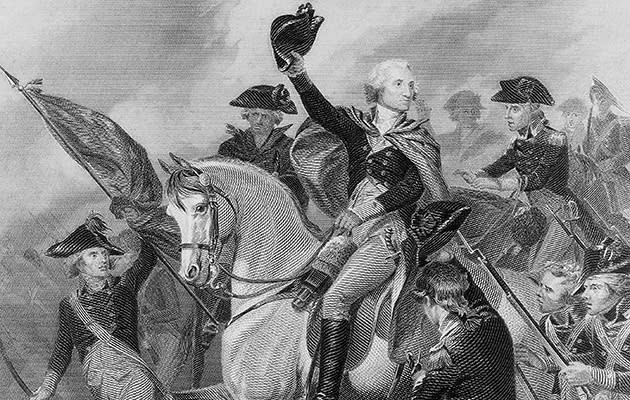
5. Andrew Jackson: No One Bad Mouths MY Wife and Gets Away With It!
Getting on Andrew Jackson's bad side was not a good idea. In 1806, 23 years before he became the seventh president, Jackson was a landowner and horse breeder who got into a serious beef with one Charles Dickinson. Dickinson was a rival breeder who declared Jackson was a coward who reneged on a bet, also accusing Jackson's wife Rachel of being a bigamist. When Dickinson's insults found their way into a newspaper, Jackson challenged Dickinson to a duel with pistols, and while Jackson took a round in the chest, he responded with a shot that killed Dickinson immediately. Jackson later found a more constructive use for his aggressive nature when, as a Major General in the Army, he led a successful battle against British troops in New Orleans during the War of 1812. He became president in 1829.
4. George Washington: It's Not Over Until George Says So
Years before George Washington helped lead America to victory in the Revolutionary War and became the first U.S. president, he proved he had courage to spare. In 1755, during the French and Indian War, Washington, then a member of the Virginia Regiment, was the principal American aide to British General Edward Braddock in a campaign to drive French forces from the Ohio Country. Braddock's campaign was a disaster. General Braddock lost his life in an attack by French soldiers and allied Native Americans. However, while the general's British colleagues quickly fled, Washington gallantly scoured the battlefield, rescuing British and Virginian soldiers and organized a formal retreat rather than abandoning the field as a coward.
PAGINATE
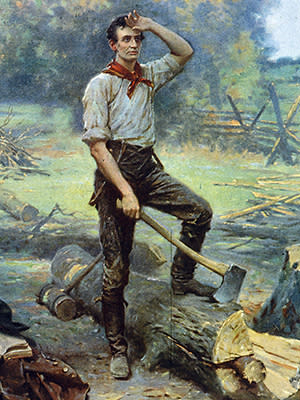
3. Abraham Lincoln: One Tough Emancipator
Before going into politics, eventually becoming the 16th president, and guiding America through the Civil War, Abraham Lincoln was a star wrestler. Physically strong and blessed with a long reach, Lincoln wrestled for 12 years in his late teens and twenties. According to the National Wrestling Hall of Fame, Honest Abe only lost once to a fellow member of the Illinois Volunteers named Hank Thompson (though the defeat kept Lincoln from taking the regimental championship). Not only was Lincoln a force to be reckoned with in the ring, he also had a real knack for trash talk: Once after taking down an opponent with a single move, Lincoln shouted to the crowd, "Any of you want to try it, come on and whet your horns!"
2. Dwight Eisenhower: Today Europe, Tomorrow The White House
If you want to convince people you have what it takes to be president, winning World War II isn’t a bad way to start. Dwight Eisenhower didn't deliver an Allied victory all by himself, but his keen talents as a strategist made him the key organizer for the Army during the war. With the help of British Forces, Eisenhower first plotted a victory in the North African campaign, then moved on to a difficult sweep through Italy. Eisenhower was named the Supreme Commander and principal strategist behind the December 1943 "D-Day" Invasion of France, which led to a decisive victory. President Roosevelt promoted Eisenhower to General of the Army before the final campaign that led to Germany's surrender and the end of the war in Europe. Given Ike's high profile and recognition as one of the nation's greatest military leaders, it's no wonder that he easily defeated Adlai Stevenson to become the 34th president in 1952.
1. John F. Kennedy: Rescuing Sailors By the Skin of His Teeth
Though he was originally given a 4-F because of his bad back, after Pearl Harbor John F. Kennedy served in the U.S. Navy, first as an ensign and then as a lieutenant commanding a Motor Torpedo boat, PT-109. While on patrol near the Solomon Islands in 1943, PT-109 was struck by a Japanese destroyer. When Japanese sailors demanded that Kennedy and the crew either fight or surrender, the future president opted to fight. The men of PT-109 swam to an island three miles away, and despite injuring his back, Kennedy dragged a badly injured crewman through the waters to safety, towing him with a line attached to a life jacket that Kennedy gripped in his teeth. Kennedy's actions earned him the Navy and Marine Corps Medal, and his wartime exploits became the basis for a movie, 1963's "PT-109."

